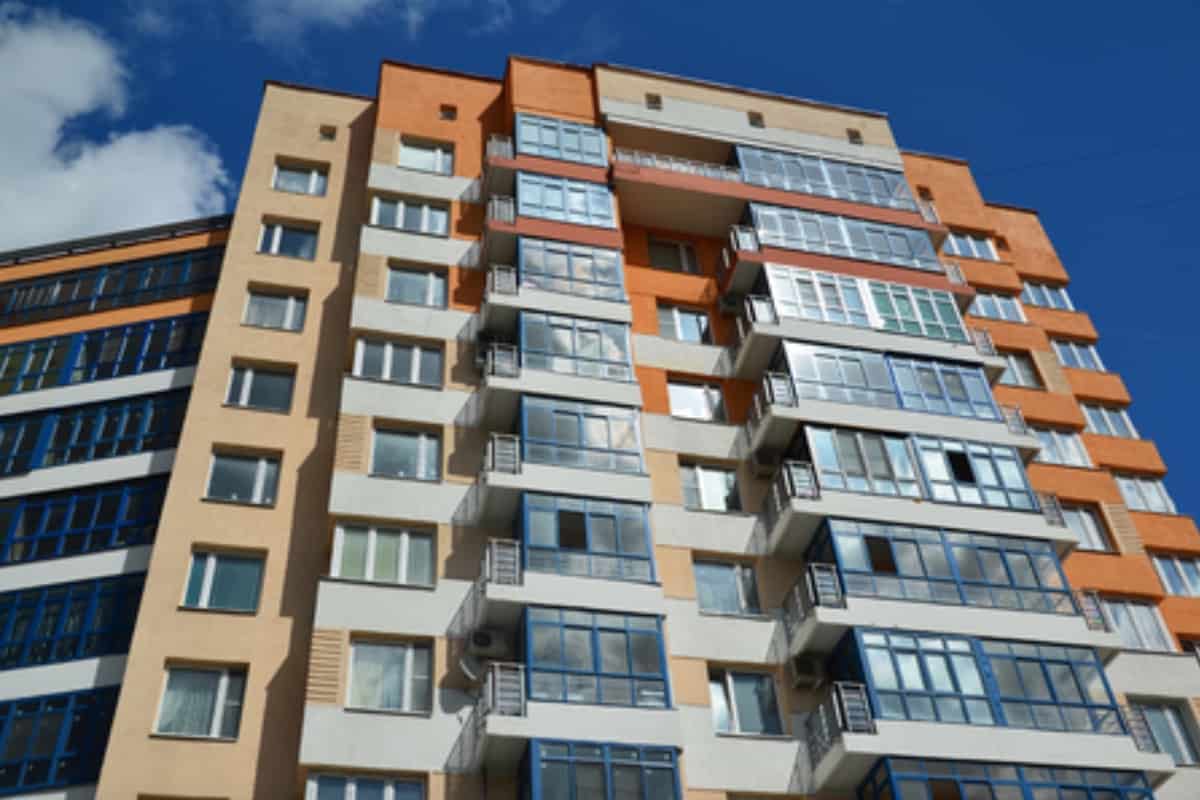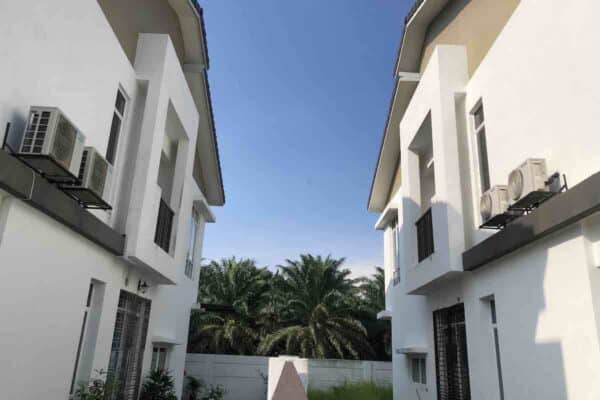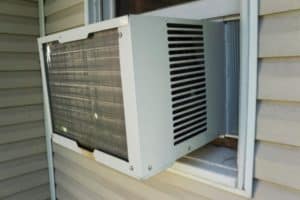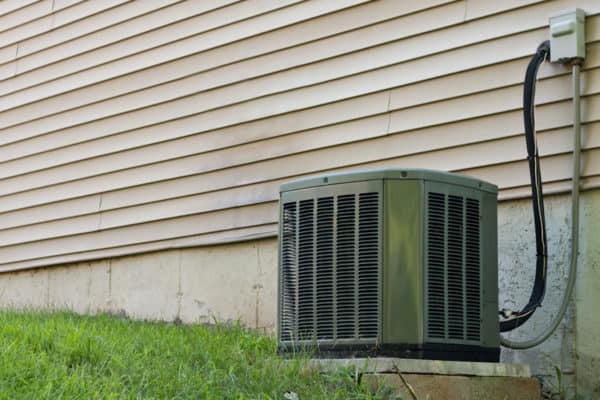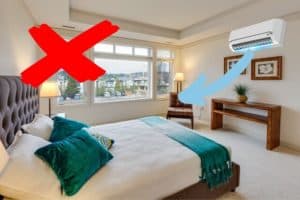Apartment Air Conditioner Guide: Size, Selection & Placement
Moving in a new apartment is exciting but the air conditioning system can be costly. So, what size of AC should you get, which type is suitable for you and how much do they cost?
Whether you are moving into a 3 bedrooms or 2 bedrooms or studio apartment, the principle is the same when choosing the air conditioning system for the apartment. In this article, we will not discuss central ACs as they are more likely for luxury apartments.
3 Types of Air Conditioning System Suitable for Apartment
For a budget apartment, forget about central air conditioners. The air conditioner for an apartment should be simple, easy to install, space saving and affordable. Good looking ACs are a bonus.
1. Window Air Conditioner
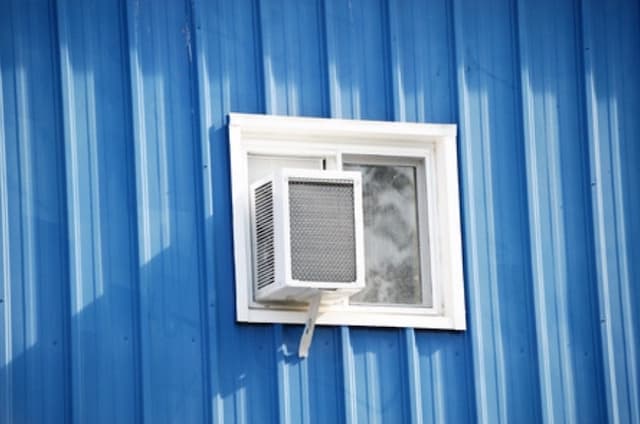
Window ACs are the most affordable type of air conditioning system. A window air conditioner cost only around $150-400. For a 3 bedroom apartment, you probably need 4 window ACs; 3 for the bedrooms and 1 for the living room. So, the total cost can be less than $1,000.
It is strongly recommended that you add a support bracket for each window AC to prevent it from falling out the windows. On average, one support bracket cost about $30. Adding in the cost of accessories at about $10, you are looking at a total installation cost about $40 per unit or less than $200 for 4 units.
However, the two main disadvantages of window ACs are that they need to occupy the windows in your apartment and they are noisy. I’m more concerned about the noise of the window AC because the apartment bedroom size is not big and thus, it’s very hard to sleep with a noisy AC.
Besides, window ACs are low in energy efficiency. According to Energy Star, a ductless mini split consumes 30% less power than window air conditioners. Then, the serious one, your window air conditioners have a risk of falling out the windows during installation and operation, and the consequences are unimaginable.
Best Window Air Conditioners for Apartment
I was researching for the best window air conditioners when I was writing an air conditioning guide for a 12×12′ room. By the way, feel free to check out that article where I also included portable ACs. Anyway, here are my top picks for window ACs:
- Amazon’s Best Seller: Midea U Inverter Window Air Conditioner 8,000BTU, U-Shaped AC with Open Window Flexibility, Robust Installation,Extreme Quiet, 35% Energy Saving, Smart Control, Alexa, Remote, Bracket Included
- Energy Star Most Efficient 2021: Frigidaire GHWQ083WC1 Gallery 8,000 BTU Energy Star Inverter Quiet Temp Smart Room Air Conditioner, 13.900, White
- Best Value for Money: FRIGIDAIRE 5,000 BTU 115V Window-Mounted Mini-Compact Air Conditioner with Mechanical Controls, White
2. Ductless Mini Split Air Conditioner

Ductless mini split ACs are more expensive than window air conditioners. A single unit of split AC cost around $700-900. For a 3 bedroom apartment, you also need a total of 4 units; 3 for the bedrooms and 1 for the living room. This totaled up to about $3,200 and that is more than 3 times the cost of the window AC.
In addition, a typical installation cost of a split AC is $500 according to HomeAdvisor. So, if you are looking at 4 units, you’ll end up with a total installation cost of about $2,000. However, installing multiple units in one apartment usually can negotiate for a lower price.
However, ductless mini split ACs have greater benefits that can outweigh their higher price. My favourite one is that split ACs are extremely quiet. At the lowest fan speed, a typical split AC creates a noise level at only 25 dBA or less compared to a window AC at 50 dBA and a portable AC at 60 dBA.
The reason why split ACs are so quiet is that their outdoor unit is installed far away from the bedroom. Also, the outdoor unit is usually mounted on the external wall, hence the wall greatly reduces the noise coming into the apartment.
Besides, ductless mini split ACs are much more energy efficient than window ACs and portable ACs. As mentioned earlier, split ACs consume 30% less energy than other room air conditioners.
Furthermore, ductless split ACs are installed at a height of about 7-8 feet. Thus, they don’t occupy valuable space in your apartment. Personally, I think the split AC looks so much better than the window AC.
Best Ductless Mini Split Air Conditioners for Apartment
There is 100 split ACs ranked as Amazon’s best sellers. But, different capacity ACs are mixed together. So, I analyzed the top 9000 BTU ACs to find out which is the best one.
- Highest Ranking & Best for DIY: PIONEER – Diamante Series (230V)
- Longest Compressor Warranty: COOPER & HUNTER – Mia Series (120V)
- Best Customer’s Rating with Instalment Plan: SENVILLE – Leto Series (120V)
- Most Rating with the Best Energy Efficiency: PIONEER – WYS Series (120V)
- Cheapest with High Customer Satisfaction: OLMO – Alpic Series (120V)
- Best Brand & My Favourite Pick: DAIKIN – 17 Series (230V) (not Amazon’s best seller)
If you are interested in my detailed analyses for the above ACs, check out my article on the best 9000 BTU split ACs where I discussed the things to look for when comparing split ACs.
3. Multi Zone Split Air Conditioner
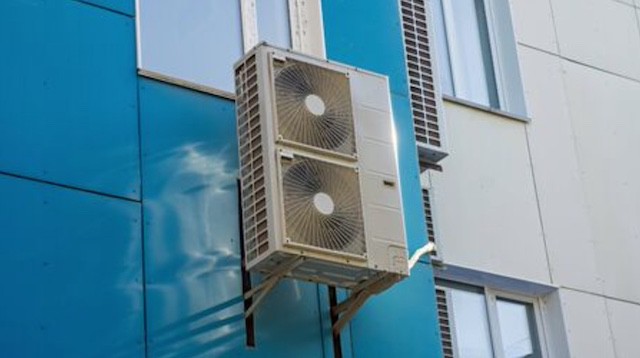
Multi zone split air conditioners are similar to the ductless mini splits but with only a single unit of the outdoor unit. For a 3 bedroom apartment, you’ll need 4 indoor units also but they all are connected to one outdoor unit only instead of 4 outdoor units. The outdoor unit of multi split AC is slightly bigger than the split AC’s.
The overall cost of the multi zone split AC is almost the same as the mini split AC. A quad zone or 4 indoor units (9,000 btu/hr x 4) cost anywhere between $3,000 to $3,500 on Amazon. Then, the installation cost of multi zone ACs is also similar to split ACs. A set of multi zone AC may cost around $2,000 to $2,500 for the installation.
However, you usually need to pull cables and add an additional power socket for the multi split AC because its outdoor unit draws a larger amount of power. Thus, an additional cost of $200-500 is needed for an electrician.
The only reason to use the multi split AC is not having sufficient space for the multiple outdoor units of the split AC. The working principle of the multi split AC is the same as the split AC. However, the split AC is more reliable because it does not share the compressor. If a multi split AC compressor breakdown, your entire apartment has no cooling.
Moreover, multi split ACs are more expensive to repair than split ACs. Therefore, if you have sufficient space, just go for the single split and you’ll have a much lesser headache.
Best Multi Zone Split Air Conditioners for Apartment
If you are interested to buy one from Amazon, I got you some of the good ones that I found. However, Amazon doesn’t have much choice, maybe you want to check out Home Depot.
- Longest Compressor Warranty: [3 zones] COOPER AND HUNTER 3 Zone Mini Split – 9000 + 9000 + 12000 – Ductless Air Conditioner.
- Quality China Brand: [4 zones] GREE MULTI30CVIR400-30,000 BTU Multi21+ Quad-Zone Wall Mount Mini Split Air Conditioner Heat Pump 208-230V (9-9-9-9).
- High Customer’s Rating Brand: [5 zones] Senville 48000 BTU Five Zone Mini Split Air Conditioner Heat Pump SENA-48HF/F (9-9-9-9-9).
How Much Cooling Capacity Your Apartment Needs?
You can calculate the cooling capacity of individual rooms. For instance, you may have one primary bedroom size around 200-250 sqft, two bedrooms size around 100-150 sqft and a living room size around 300-350 sqft. Then, find the required cooling capacity using the below chart:
| Room Area | Capacity Needed (btu/hr) |
|---|---|
| 100-150 sqft | Heavily Shaded = 4,500 Normal Shade = 5,000 Very Sunny = 5,500 |
| 150-250 sqft | Heavily Shaded = 5,400 Normal Shade = 6,000 Very Sunny = 6,600 |
| 250-300 sqft | Heavily Shaded = 6,300 Normal Shade = 7,000 Very Sunny = 7,700 |
| 300-350 sqft | Heavily Shaded = 7,200 Normal Shade = 8,000 Very Sunny = 8,800 |
| 350-400 sqft | Heavily Shaded = 8,100 Normal Shade = 9,000 Very Sunny = 9,900 |
| 400-500 sqft | Heavily Shaded = 9,000 Normal Shade = 10,000 Very Sunny = 11,000 |
From there above chart, you’ll need a multi split AC with 4 units of 9,000 btu/hr indoor unit. You might have noticed that your rooms only required 5,000-6,000 btu/hr. So, is a 9,000 btu/hr AC too much for your room?
Honestly, if you can get a 5,000 btu/hr split AC, I encourage you to get it. In fact, most manufacturers don’t produce 0.5HP or 5,000 btu/hr split AC. Hence, the lowest capacity for a split AC is mostly 9,000 btu/hr. However, most split air conditioners are inverter type.
Then, what is the inverter? Air conditioners with inverter technology can regulate the speed of their compressor and thus, regulate cooling power to prevent overcooling and save energy. So, a 9,000 btu/hr inverter air conditioner can operate at a capacity anywhere between 4,000-10,000 btu/hr (yes, they can overclock).
Window, split and multi split ACs all mostly already have inverter technology. Therefore, you don’t have to worry about the AC overcooling or wasting energy.
Where to Put the Air Conditioner in Your Apartment?
Your air conditioner should not blow air directly onto your body which may cause you dry lips and headache. If you are using a window AC, you don’t have much choice but to put it at the windows. However, you can shift the bed so that cold air will not blow directly onto the bed which may affect sleep quality.
If you are using a wall-mounted type split AC you can install the indoor unit on the wall directly above the bedhead. Besides, you may also put the AC on the wall close to the side of the bed.
Besides, a wall-mounted type AC should be placed about 7-8 feet above the floor but leave about 100mm gaps between the AC and the ceiling for good return airflow and service accessibility. Furthermore, you should not put any tall object in front of the wall-mounted AC as it might affect the performance of the AC.
Some air conditioners have a motion sensor that detects if there are any people in the room so that they can reduce cooling intelligently to save power. If you have an object in front of its motion sensor, it’ll take it as no movement and then, reduce cooling regardless of the current room temperature.
The outdoor unit of a split AC should be installed at a well-ventilated place to prevent underperformance and potentially hot air short cycle and thus, tripping. Furthermore, the AC will consume more power if the surrounding temperature at the outdoor unit is relatively high. Lastly, the outdoor unit should be serviceable.
Copper Pipe, Drain Pipe & Electrical Switch
For both the ductless mini split and multi split AC, each indoor unit require to connect two insulated copper tubes to their respective outdoor unit. Then, each indoor unit also requires to connect an insulated PVC drain pipe to the nearest floor trap. Last but not least, all ACs required power supply cables and switches.
If you have a ceiling in your room, you may choose to hide the copper pipes above the ceiling. If so, additional trunking to cover the copper pipes is usually not needed (check your local authority requirement). If your room doesn’t have a ceiling, you can run the copper pipes on the surface of the wall covered with plastic or metal trunking. Additionally, you can paint the trunking so it looks better with your apartment interior.
Do pay more attention to the AC drain pipe. Apartments usually have three types of floor trap to discharge water; a) sewage, b) rain water, and c) drainage.
- Sewage – Sewage pipes are for toilet bowls. DO NOT discharge your AC drain water to sewage pipes because the smell will backflow to your house through the AC.
- Rain water – Rain water downpipes are for rain water. DO NOT discharge your AC drain to rain water downpipes because the amount of rain water flowing in the pipes may prevent your AC drain water from discharging and thus, the AC drain water overflow and leaking at the indoor unit.
- Drainage – Drainage pipes are for basin and shower. DO discharge your AC drain water to drainage pipes because the water pressure in the pipes is not strong and thus, the AC drain water can discharge smoothly.
Small capacity air conditioners only require single phase electrical supply. Many inverters split ACs only require one power supply from the house electrical box to the indoor unit and then, loop a set of single phase cable from the indoor unit to the respective outdoor unit. However, different brands and models may have different connections. So, do check with the AC installation manual.
The outdoor unit of the multi split AC usually needs a dedicated electrical isolator because they need more power due to combined capacity. However, they can loop a set of single phase cable from the outdoor unit to the respective indoor units. But, they need one set of three phase cable from the house electrical box.

If you have anything to add (or ask) about this topic, leave a comment down below!


